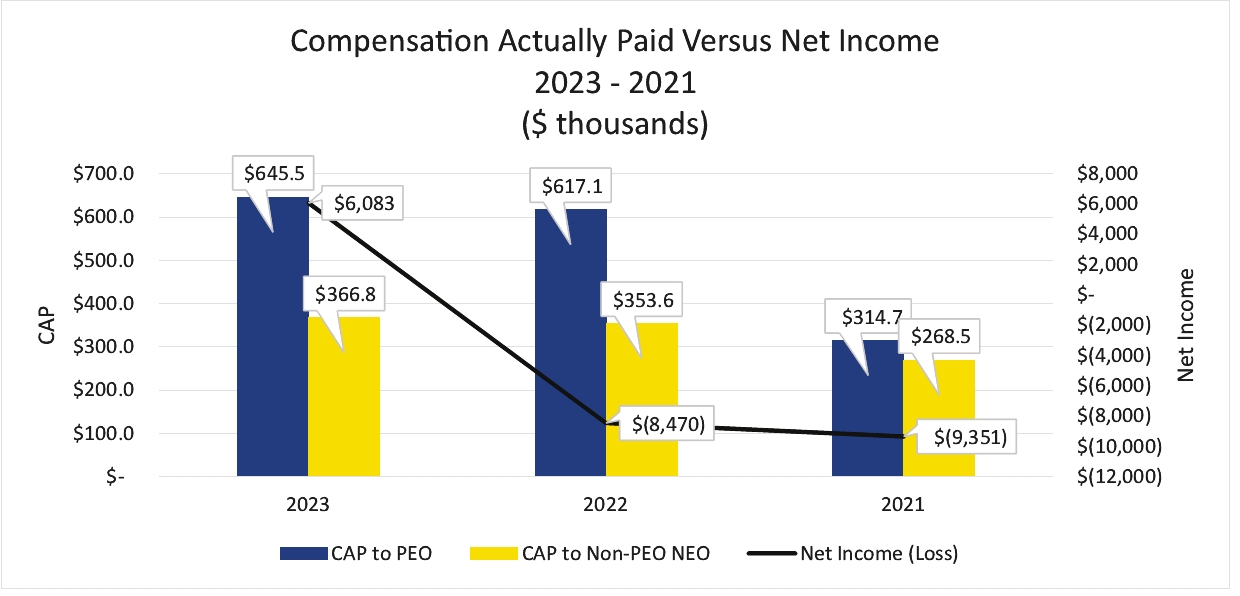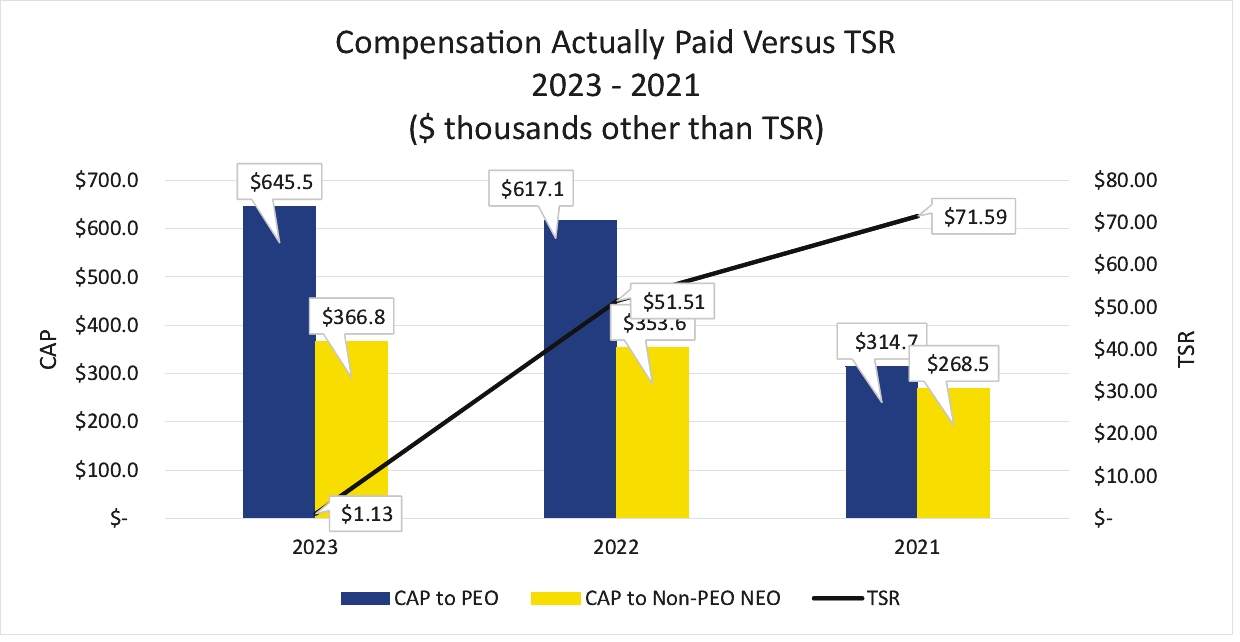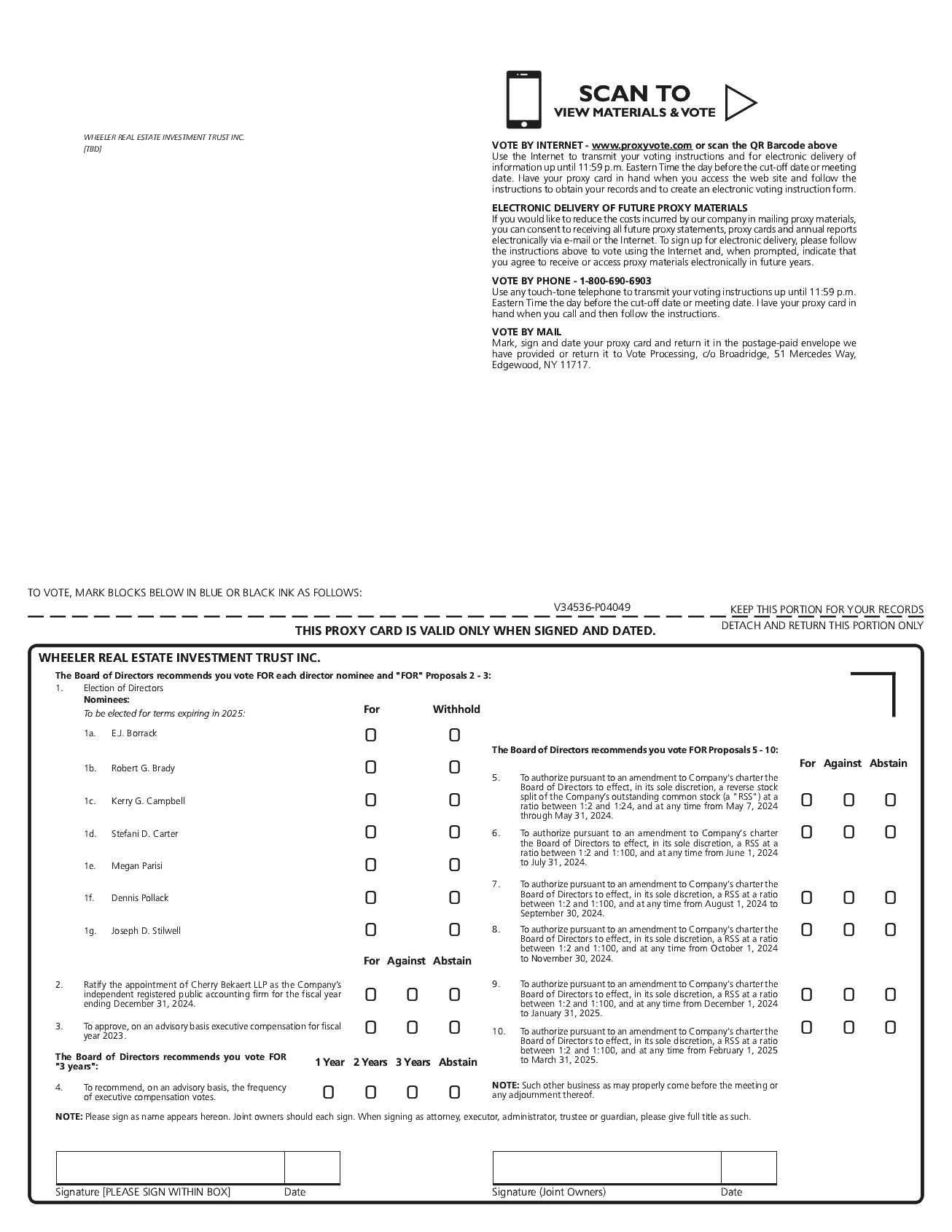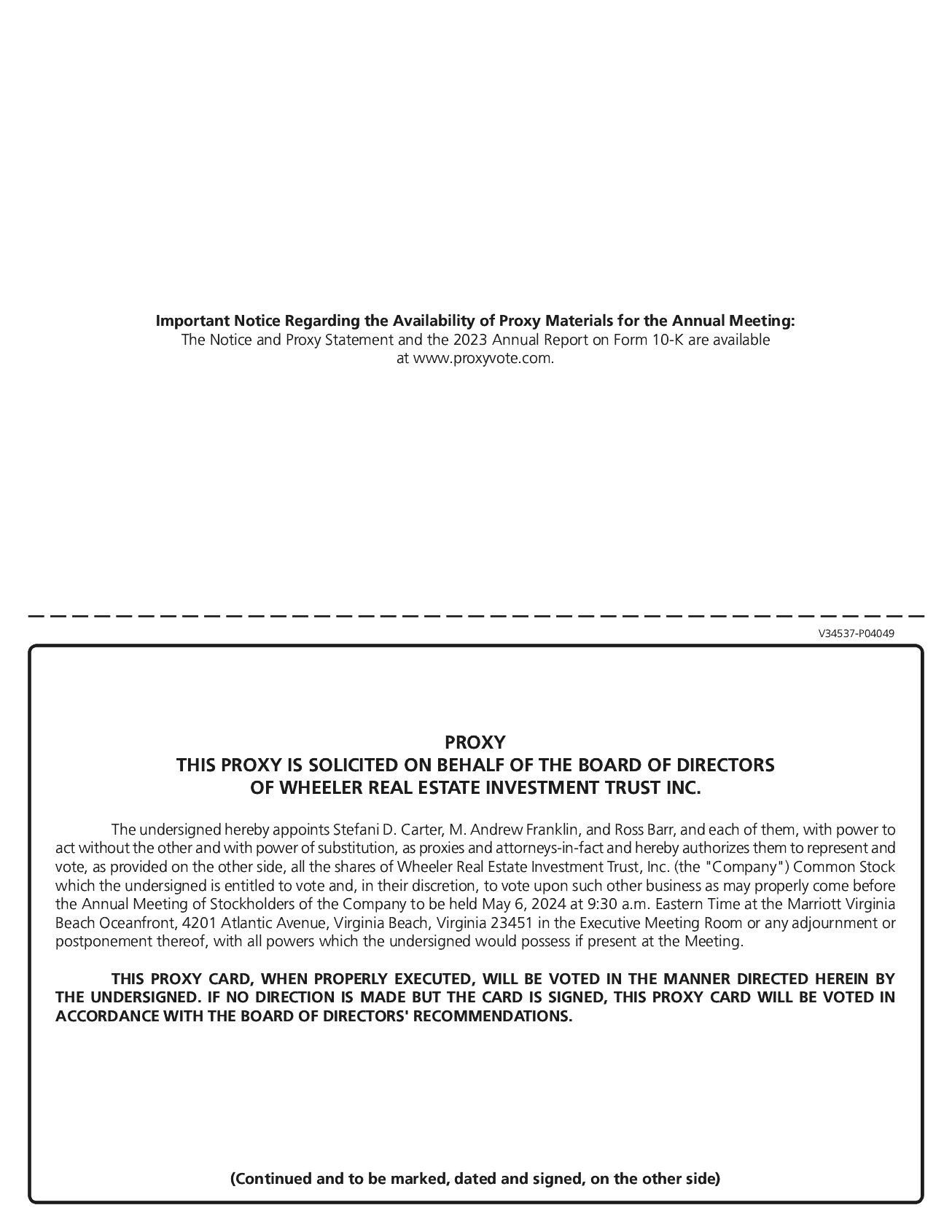Wheeler REIT, L.P. and Cedar’s operating partnership, Cedar Realty Trust Partnership, L.P., are party to a cost sharing and reimbursement agreement, pursuant to which the parties agreed to share costs and expenses associated with certain employees, certain facilities and property, and certain arrangements with third parties (the “Cost Sharing Agreement”). Related party amounts due to the Company from Cedar as of December 31, 2023 and 2022 under the Cost Sharing Agreement were approximately $8.1 million and $7.3 million, respectively.
Investment in Stilwell Activist Investments, L.P.
On June 1, 2023, the Company subscribed for an investment in the amount of $3.0 million for limited partnership interests in Stilwell Activist Investments, L.P., a Delaware limited partnership (“SAI”). On September 1, 2023, and November 30, 2023, the Company subscribed for additional investments each in the amount of $3.5 million for limited partnership interests in SAI. The investment objective of SAI is to seek long-term capital appreciation through investing primarily in publicly-traded undervalued financial institutions or businesses with a strong financial component, or the securities of any of them, and pursuing an activist shareholder agenda with respect to those institutions.
Stilwell Value is the general partner of SAI. Joseph Stilwell, a member of the Company's Board, is the managing member of Stilwell Value and a limited partner in certain funds advised by Stilwell Value. Additionally, E.J. Borrack, a member of the Company’s and Cedar’s Boards, serves as the General Counsel to Stilwell Value and its affiliated entities, including SAI and related funds, and is a limited partner in one of the funds advised by Stilwell Value. Megan Parisi, a member of the Company’s Board, serves as the Director of Communications to Stilwell Value and its affiliated entities, including SAI and related funds, is a non-managing member of Stilwell Value and is a limited partner in one of the funds advised by Stilwell Value.
The Company’s initial subscription was approved by the disinterested directors of the Company, and, after the formation of the RPT Committee, the additional subscriptions were approved by that Committee.
A portion of SAI’s underlying investments are in the Company’s own equity and debt securities. The Company may not withdraw its capital from SAI for a period of one year measured from the date of the Company’s initial investment, subject to certain exceptions.
In consideration for management, administrative and operational services, limited partners of SAI pay a management fee to an affiliate of Stilwell Value each calendar quarter, in advance, equal to 0.25% (an annualized rate of 1%) of each limited partner’s capital account balance on the first day of such calendar quarter. In addition, as of the last day of each specified performance period, an incentive allocation of 20% of the amount by which the “positive performance change,” if any, that has been credited to the capital account of a limited partner during such period exceeds any positive balance in such limited partner’s “carryforward account,” is debited from the limited partner’s capital account and is simultaneously credited to the capital account of Stilwell Value.
As of December 31, 2023, the fair value of the Company’s SAI investment was $10.7 million, which includes $10.0 million from subscriptions and $0.2 million in fees. Unrealized gains on investment securities, net of fees were $0.7 million for the year ended December 31, 2023.
Excepted Holder Limits
On December 4, 2023, the Board of Directors, under the terms of the Charter, created a Capital Stock Excepted Holder Limit of 55% and a Common Stock Excepted Holder Limit of 86% for each of the Stilwell Investors. Joseph Stilwell, a member of our Board of Directors, is the managing member and owner of Stilwell Value, which is the general partner of each of the Stilwell Investors.
On December 5, 2023, the Company entered into an Excepted Holder Agreement with the Stilwell Investors with respect to such limits. The Capital Stock Excepted Holder Limit provides that the Stilwell Investors are exempted from the Charter’s aggregate stock ownership limit of not more than 9.8% in value of the aggregate of the outstanding shares of all classes of the Company’s capital stock (as calculated under the definitions of “Aggregate Stock Ownership Limit” and “Beneficial Ownership” in the Charter) and are instead subject to the percentage limit established by the Board of Directors. The Common Stock Excepted Holder Limit provides that the Stilwell Investors are exempted from the Charter’s common stock ownership limit of not more than 9.8% in value of the aggregate of the outstanding shares of the Company’s Common Stock (as calculated under the definitions of




